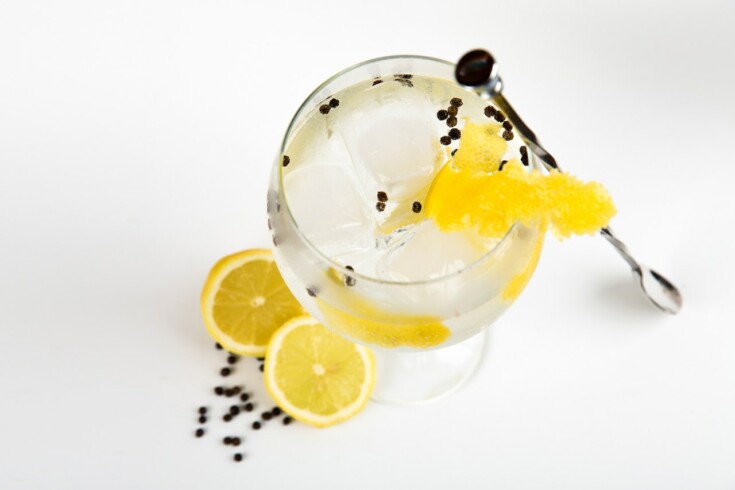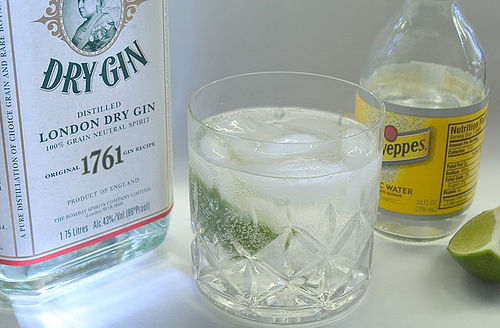
Gin is a distilled alcoholic beverage that originated in the Netherlands in the 17th century. It is made by distilling fermented grains such as barley, corn, or rye and then infusing the resulting spirit with botanicals, including juniper berries. But what does gin taste like?
Gin is a versatile spirit that can be enjoyed on its own or used as a base for a variety of cocktails. Its flavor profile makes it a popular choice for classic cocktails like the gin and tonic or the martini, as well as more modern creations. Whether you’re a gin aficionado or a newcomer to the spirit, understanding what gin tastes like is essential to fully appreciating its unique flavor profile.
Table of Contents
Gin: A Brief Overview
Gin is a distilled spirit that is made from grain and flavored with botanicals. Its most notable flavor comes from juniper berries, which give it a piney taste. The spirit has a long history, dating back to the 17th century, when it was first produced in Holland.
Gin is a versatile spirit that can be enjoyed in a variety of ways. It is often used as a base for cocktails, but it can also be enjoyed neat or on the rocks. The spirit’s unique flavor profile makes it a popular choice for those who enjoy complex and interesting drinks.
There are several different types of gin, each with its own unique flavor profile. Some of the most popular types of gin include London Dry Gin, Plymouth Gin, Old Tom Gin, and Genever Gin. Each type of gin is made using different botanicals and production methods, which gives it a distinct flavor.
One of the reasons gin has become so popular is because of its versatility. It can be enjoyed in a variety of cocktails, from classic drinks like the Gin and Tonic to more modern creations. The spirit’s unique flavor profile also makes it a popular choice for those who enjoy experimenting with different flavors and ingredients in their cocktails.
 photo credit: wikimedia.org
photo credit: wikimedia.org
Understanding the Taste of Gin
Gin is a distilled spirit that has a unique taste profile. Understanding what gin tastes like involves exploring the role of juniper berries and other botanicals in its flavor profile.
Juniper Berries’ Influence
Juniper berries are the most important ingredient in gin. They provide the signature pine flavor that is characteristic of this spirit. The taste of juniper berries can be described as resinous and slightly sweet.
The intensity of the juniper flavor varies depending on the type of gin. London dry gin, for example, has a more pronounced juniper flavor than other types of gin. The juniper flavor in gin is often described as refreshing and crisp, making it an ideal spirit for cocktails.
Botanicals’ Role
In addition to juniper berries, gin contains a variety of other botanicals that contribute to its flavor profile. These botanicals can include coriander, citrus peel, orris root, and angelica.
Coriander provides a citrusy and slightly spicy flavor to gin, while citrus peel adds a bright and zesty note. Orris root contributes a floral and earthy flavor, while angelica provides a musky and slightly sweet taste.
The combination of these botanicals with juniper berries creates a complex and layered flavor profile that makes gin a versatile and beloved spirit.
Different Types of Gin and Their Tastes
There are several types of gin, each with a unique taste. The following are the most common types of gin and their tastes:
London Dry Gin
London Dry Gin is the most popular type of gin, and it is known for its dry taste. It is made from a mixture of botanicals, including juniper berries, coriander, and angelica root. London Dry Gin has a strong juniper flavor with hints of citrus and spice. It is often used in classic gin cocktails like the Gin and Tonic and the Martini.
Old Tom Gin
Old Tom Gin is a sweetened gin that was popular in the 18th century. It has a slightly sweeter taste than London Dry Gin, with a hint of caramel. Old Tom Gin is made from the same botanicals as London Dry Gin, but it is sweetened with sugar or honey. It is often used in classic cocktails like the Tom Collins and the Martinez.
Navy Strength Gin
Navy Strength Gin is a high-proof gin that was originally made for the British Navy. It has a bold, intense flavor and is usually around 57% ABV. Navy Strength Gin is made from the same botanicals as London Dry Gin, but it has a stronger juniper flavor and a hint of saltiness. It is often used in cocktails that require a bold gin flavor, like the Negroni.
Plymouth Gin
Plymouth Gin is a type of gin that is made exclusively in Plymouth, England. It has a smooth, slightly sweet taste, with a hint of spice. Plymouth Gin is made from a mixture of botanicals, including juniper berries, coriander, and angelica root. It has a lower juniper flavor than London Dry Gin, and it is often used in classic cocktails like the Plymouth Gin Martini.
Sloe Gin
Sloe Gin is a sweetened gin that is made by infusing gin with sloe berries. It has a sweet, fruity taste with a hint of almond. Sloe Gin is lower in alcohol content than other types of gin, and it is often used in cocktails that require a fruity flavor, like the Sloe Gin Fizz.
Pairing Gin with Food
Gin is a versatile spirit that can be paired with a wide range of foods. When pairing gin with food, it is important to consider the flavor profile of the gin. Some gins are floral and herbaceous, while others are more citrusy and fruity. The following are some general guidelines for pairing gin with food:
Light Meals and Sandwiches
Light meals or sandwiches could be great to pair with gin cocktails. They are easy to prepare and have a refreshing taste. A variety of salads, such as Caesar salad, spinach salad, or mixed greens with vinaigrette, are a perfect option for pairing with gin cocktails.
Seafood
Gin’s juniper flavor adds an earthy depth to seafood dishes, enhancing the seafood’s freshness. London dry gins are a classic pairing for seafood dishes, while Plymouth gins are ideal for a more subtle flavor. Citrus-forward gins are also great for highlighting the sweetness of seafood.
Meat
Gin can also be paired with meat dishes. The floral and herbal notes in gin can complement the earthy flavors of meat, creating a harmonious balance. Gin is particularly well-suited to game meats, such as venison or duck, and can also be paired with pork or lamb dishes.
Cheese
Gin can be paired with a variety of cheeses, including soft cheeses like brie or camembert, as well as hard cheeses like cheddar or parmesan. The herbal and floral notes in gin can complement the nutty and tangy flavors of cheese, creating a unique flavor profile.
Frequently Asked Questions
What are some popular gin brands worldwide?
Gin is a popular spirit that is enjoyed by many people worldwide. Some of the most popular gin brands include Bombay Sapphire, Hendrick’s Gin, Tanqueray, Beefeater, and Gordon’s. Each of these brands has a unique flavor profile that sets them apart from the others.
What are the different flavors of gin?
Gin is primarily flavored with juniper berries, but many other botanicals can be added to create different flavor profiles. Some of the common botanicals used in gin include coriander, angelica root, citrus peel, and orris root. These botanicals can give gin different flavors, such as floral, citrusy, spicy, or herbal.
What makes a gin the best?
The best gin is subjective and varies from person to person. However, some of the factors that can make a gin stand out include the quality of the ingredients used, the balance of flavors, and the smoothness of the spirit. Additionally, a gin’s versatility in cocktails and its ability to pair well with different mixers can also make it a favorite among gin lovers.
How would you describe the taste of a gin and tonic?
A gin and tonic is a classic cocktail that is enjoyed by many people. The taste of a gin and tonic can be described as crisp, refreshing, and slightly bitter. The juniper flavor of the gin pairs well with the bitterness of the tonic water, while the citrus garnish adds a hint of sweetness to the drink.
What is the typical alcohol percentage in gin?
The typical alcohol percentage in gin is around 35-55% ABV (alcohol by volume). However, some gins can have a higher or lower alcohol percentage, depending on the brand and the distillation process.
What are the main differences between gin and vodka?
Gin and vodka are both clear spirits that are often used in cocktails. However, the main difference between the two is the flavor profile. Gin is flavored with botanicals, while vodka is typically flavorless. Additionally, gin is required by law to have a minimum of 37.5% ABV and to be flavored with juniper berries, while vodka has no such requirements.
Conclusion
Gin is a complex spirit with a unique flavor profile. It is predominantly characterized by juniper berries, which give it a pine-like taste with a hint of citrus scent and a typically intense alcoholic bloom. Gin can be savory or sweet depending on what other ingredients are added to it, and it has a refreshing, citrusy, and herbal taste that is both strong and tropical.
Understanding what gin tastes like can help you find your perfect bottle and appreciate its unique flavor profile. With its complex blend of botanicals, each variety offers something special that’s sure to tantalize your taste buds. S
Related Posts
If you’re interested in learning more about gin, there are many resources available online. Here are a few related posts that you might find helpful:
- GINEROSITY: World’s First Social Enterprise Gin Launched: This post from The Whisky Lady discusses the launch of Ginerosity, the world’s first social enterprise gin. The founders of Pickering’s Gin teamed up with social enterprise experts to produce the spirit, with profits going to support disadvantaged young adults.
- In Pictures: visiting Pickering’s Gin at Summerhall Distillery: Another post from The Whisky Lady, this one takes readers on a tour of Pickering’s Gin at Summerhall Distillery in Edinburgh. The post includes photos and information about the distillery’s history and production process.
- Deanston To Keep Up With Current Trends Through New Packaging: This post from The Whisky Lady discusses Deanston’s new packaging design, which highlights the distillery’s premium craftsmanship and community history.
- In Pictures: Visiting the Edinburgh Gin Distillery: This post from The Whisky Lady takes readers on a tour of the Edinburgh Gin Distillery, with photos and information about the distillery’s history and production process.
- GINspiration: 10 gins you need to try this summer: Finally, this post from The Whisky Lady provides a list of 10 gins that readers should try during the summer months. The post includes information about each gin’s flavor profile and suggested cocktail recipes.



